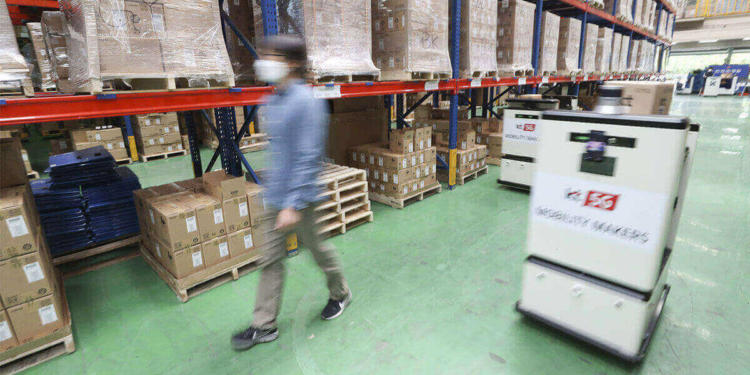KT Corp. announced on Sunday that it employed the use of 5G-powered self-driving carts at its distribution center. The South Korean telecommunications company jointly developed the carts with Twinny Co.
The deployment reduced about 47 percent of the employees’ travel range for loading and transporting inventory, thus improving work efficiency and minimizing physical contact among workers. KT also expects the new technology to boost its output at large-scale distribution centers and small-scale warehouses.
A first for the industry, the carts allowed KT to restructure and reorganize its processes at its Seobu Distribution Center.
Twinny Co. is a South Korean software development firm specializing in online platforms and indoor autonomous robots.
The company named the new 5G self-driving carts, NarGo and TarGo, “equipped with Automatic Intelligent Vehicle (AIV)” technology.
NarGo comprises an autonomous vehicle and a trailing cart that could carry large quantities of cargo at the same time. Meanwhile, TarGo automatically follows workers and carries a variety of loads in a wider area.
AIV System
The AIV system uses integrated indoor maps and real-time information to automate the carts fully. It enables the carts to assess and calculate operational instructions and also collect and process statistical data for efficient analysis.
Choi Kangrim, Head of KT’s Connected Car Biz Center, stated a rising demand for contactless operations and services in the post-COVID era. In response, KT would do its best to assist its clients and enjoy the benefits of leading technological advancements.
KT’s AIV system and self-driving logistics carts use the company’s integrated mobility platform, “5G Mobility Makers.” The company’s connected car services use the platform to collect and analyze data coming from different vehicles to automate driving control. This feature allows for real-time remote monitoring of AIV cloud control centers.
KT plans to supply 5G autonomous carts and control systems to various industrial establishments such as libraries and hospitals as means for small-sized cargo transportation.







